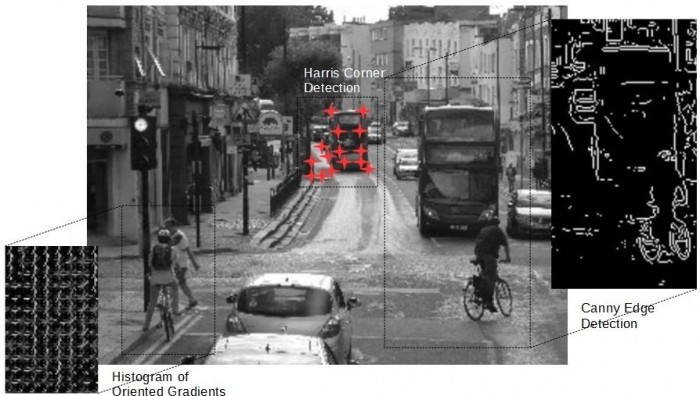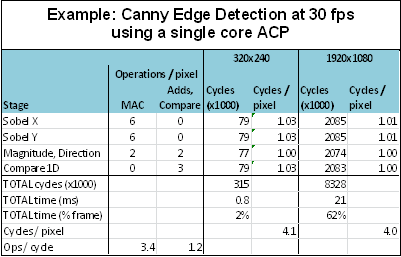Designed for Automotive and Machine Vision
The ACP1 is a pixel based image processor optimised for automotive and machine vision applications. It offloads the repetitive per pixel processing that is characteristic of the early and middle stages of many image processing applications. The processing is performed using a core that is as small as a hardwired unit, but with the flexibility of a fully programmable processor.
Image processed using ACP1
Usage
The ACP1 is controlled using software defined routines accessed from C using an API. The API executes software on the ACP1, allowing a wide range of functions and image parameters (size, number of bits, colour space etc.), including:
- Colour space conversions

- 3×3 convolution filters: Arbitrary, Prewitt, Sobel
- 5×5, 7×7 and larger arbitrary filters
- Binarization and feature lists
- High Dynamic Range lookups
- Histogram: straight and bi-linear interpolation
- 2D vector Phase and Magnitude
- Image scaling
- Harris corner detection
- Canny edge detection
- Histogram of Oriented Gradients (HOG)
- Image windowing
- Optical Flow feature processing
Performance
Due to the image processing specific architecture of the ACP1 core, almost 100% efficiency is achievable. This results in higher performance, lower area and lower power than traditional solutions. The ACP1 can operate on entire images at once, or process lines as they are obtained from the camera reducing latency and memory space. The ACP1 can be configured with a number of cores, operating on parts of the image in parallel.
The table shows the cycle times for the various stages of a Canny Edge Detection algorithm for two different sized images.
The two graphs below show the percentage of a frame taken to perform Canny, and Harris Feature Detection. Idle cycles may be used for other operations to further increase performance and efficiency.
 ACP1 Area and Power
ACP1 Area and Power
Summary
The ACP1 represents the ultimate efficiency for pixel based image processing.
- Flexible solution – Fully programmable via software
- High efficiency processor – Greatly reduces system power
- Small physical area – Lowers unit cost
- Performance of a fixed function unit with the Flexibility of a standard processor
- Fully scalable and configurable to match requirements
- Architecture optimised for image processing applications
- Small memory requirement
- Easy to integrate – compatible with industry standard RISCs
- Rapid development facilitated through familiar programming environments



